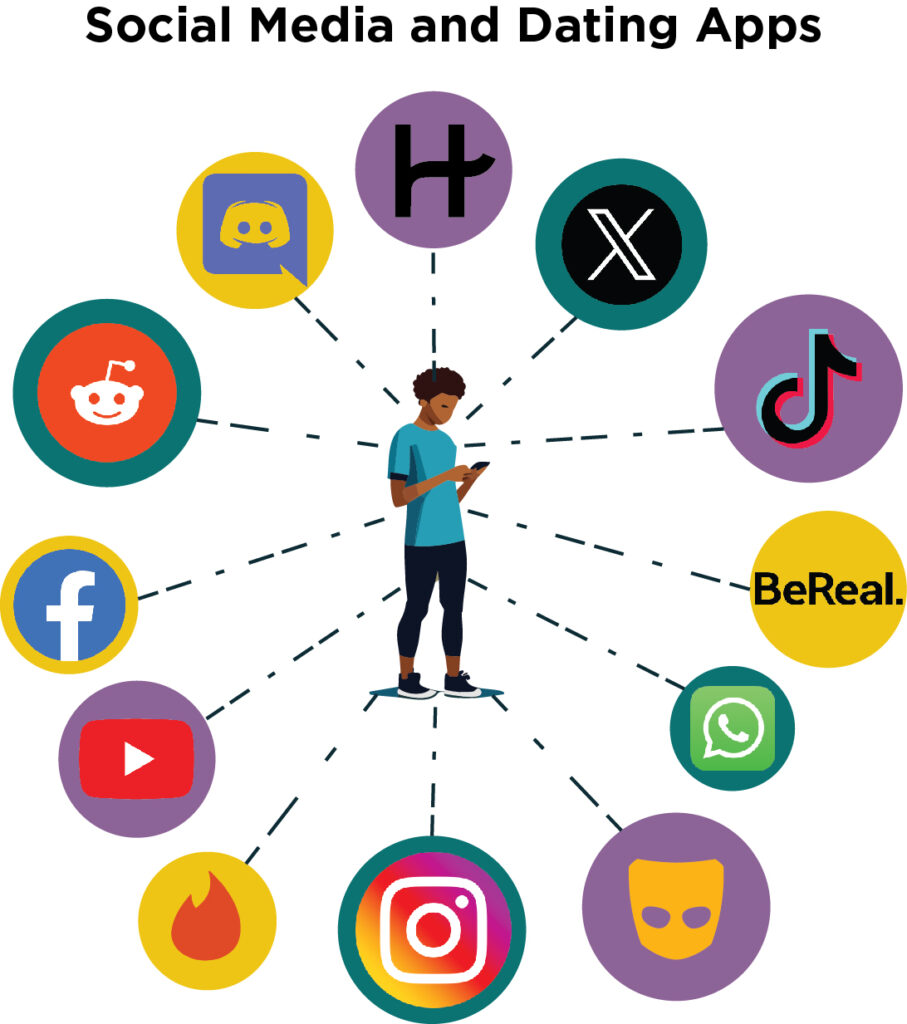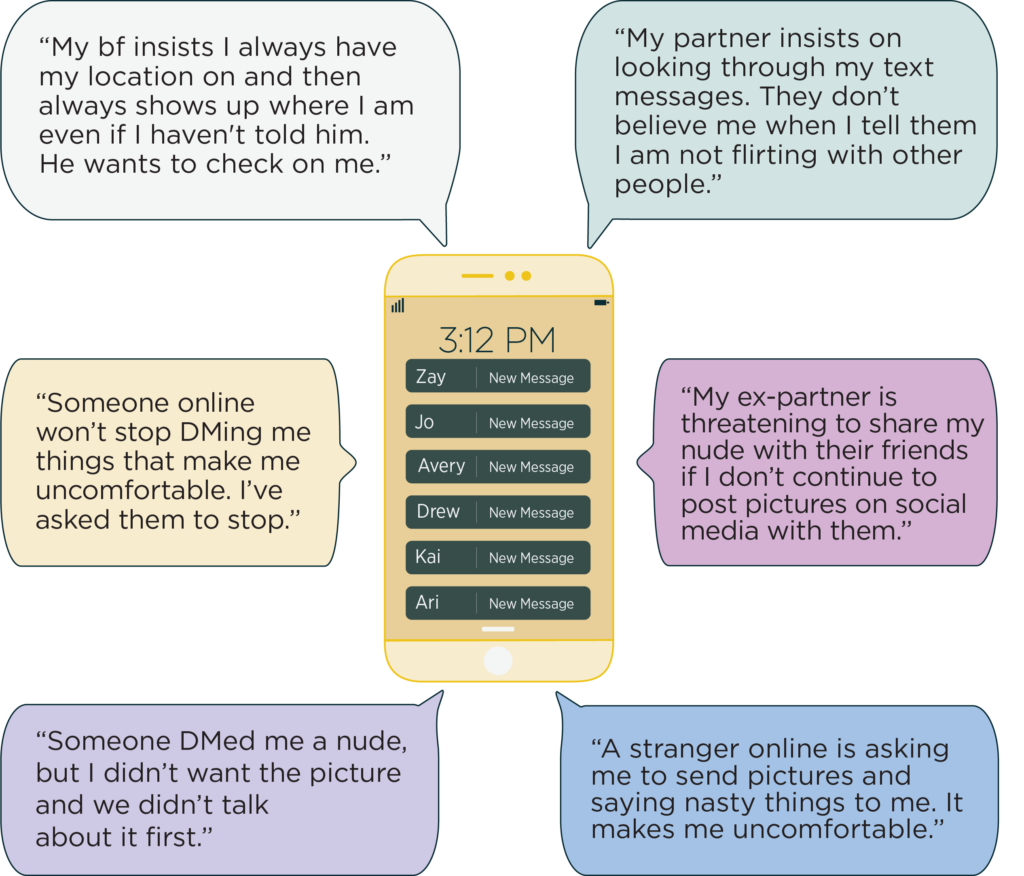Decoding Sexual Cyberbullying Behaviors
What does sexual cyberbullying look like?
Sexual cyberbullying behaviors include:

The following chart describes sexual cyberbullying behaviors and examples of each sexual cyberbullying behavior. This graphic can be downloaded here.
Sexual Cyberbullying Behaviors

Where does sexual cyberbullying happen?
| Sexual cyberbullying can occur through: | Sexual cyberbullying can occur on: |
|
|
Although online platforms allow young people to communicate, and to easily and directly connect with peers, they can also be used to search for people or post information anonymously. Professionals should be aware of social media and dating apps young people frequently use, as well as their logos. A 2024 Pew Research Center publication—Teens and Social Media Fact Sheet—provides more information about how teens use online platforms.17 A recent literature review examined what is known about how sexual harassment is facilitated by dating apps.18

You can help youth protect themselves. Youth need to know how to use these settings for each app to protect their personal information and minimize their risk for experiencing sexual cyberbullying.19,20 Every app has its own privacy and location settings.d For example, youth should know whether their posts on different apps are public or private, whether the app is tracking their location, and whether it sells their personal information to third parties.
Decoding Signs of Sexual Cyberbullying
-
What are the signs of sexual cyberbullying?
-
What signs of sexual cyberbullying can you listen for?
Decoding How to Help Youth
- Teach young people how to use privacy and location settings to protect their personal information and minimize their risk for experiencing sexual cyberbullying.
- Educate young people on how to use technology safely and protect themselves against malicious behavior online by teaching them the signs of sexual cyberbullying.
- Learn about sexual cyberbullying laws within your state. There is variation from state to state in what is considered sexual cyberbullying,31 so make sure you know the laws within your state and have conversations with youth about those laws.
- Have routine conversations with young people to teach them about sexual cyberbullying, including what it looks like, why it is harmful, and whether to do anything/what to do if they are experiencing and/or engaging in sexual cyberbullying.
- Discuss consent with young people and ensure they know that photos of themselves or others should not be shared without permission.
- Demonstrate support for young people who have experienced sexual cyberbullying by asking them what they need.
- Demonstrate support for youth who cyberbully others by asking about their understanding of their behavior, explaining reasons why sexual cyberbullying is not acceptable, and connecting them to services to understand the root causes of their behavior, if needed.
- Connect youth with local services (e.g., counseling, digital safety courses, legal consultation) to support their mental health and legal needs after sexual cyberbullying occurs.
-
Prepare for conversations about sexual cyberbullying
Suggested citation: Schlecht, C., Griffin, A.M., Rosenberg, R. (2024). How to decode signs of sexual cyberbullying and support teens and youth. Child Trends. https://activatecenter.org/resource/how-to-decode-signs-of-sexual-cyberbullying-and-support-teens-and-youth/
[a] The information provided in this resource is based on Activate’s summary of research on sexual cyberbullying.
[b] We use “experience and/or engage in sexual cyberbullying” to refer to youth who experience sexual cyberbullying, engage in behaviors of sexual cyberbullying, or both. This language is purposeful and YSP should avoid labeling youth as victims or perpetrators in this work.
[c] The term “cyber” may be outdated and not relevant to youth. However, it is still used in the literature. Youth-supporting professionals should consider using other terms such as online or electronic or ask young people what words they would use.
[d] At the time of publication, Senate bill 1409: Kids Online Safety Act passed the U.S. Senate with bipartisan support and will move to the House of Representatives. The bill aims to hold tech companies such as Facebook accountable for harmful online behavior such as bullying and sexual cyberbullying. The bill requires tech companies to use a “duty of care” and default settings as the safest possible.
-
References
-
Acknowledgements



